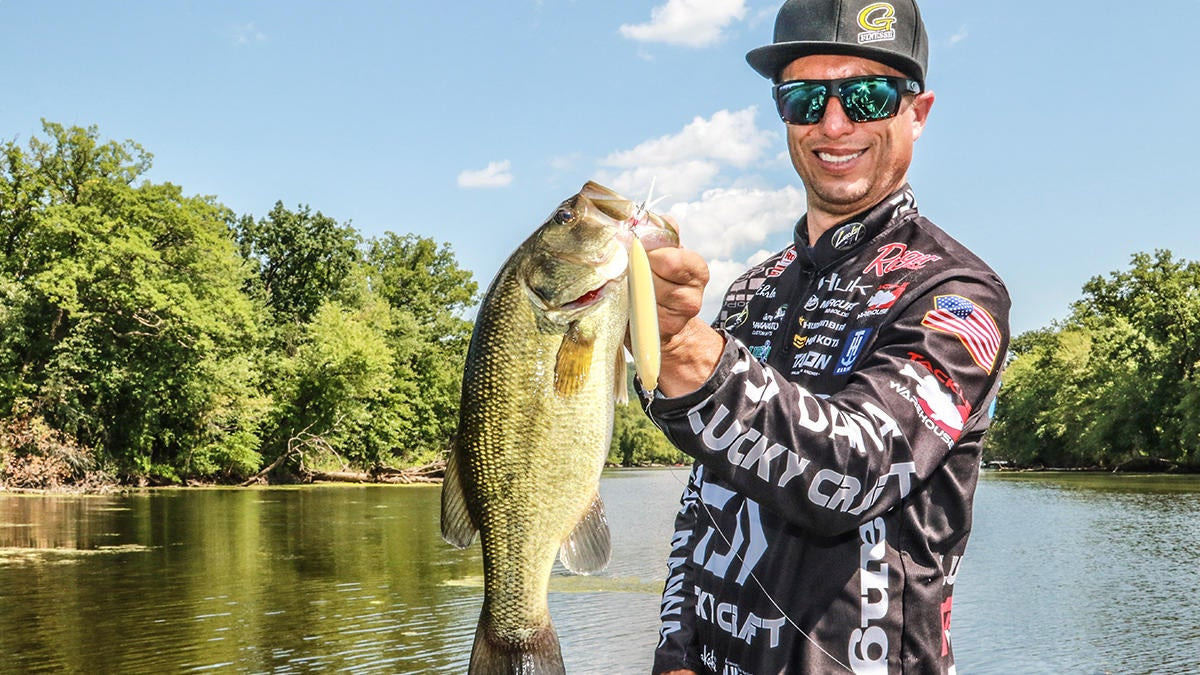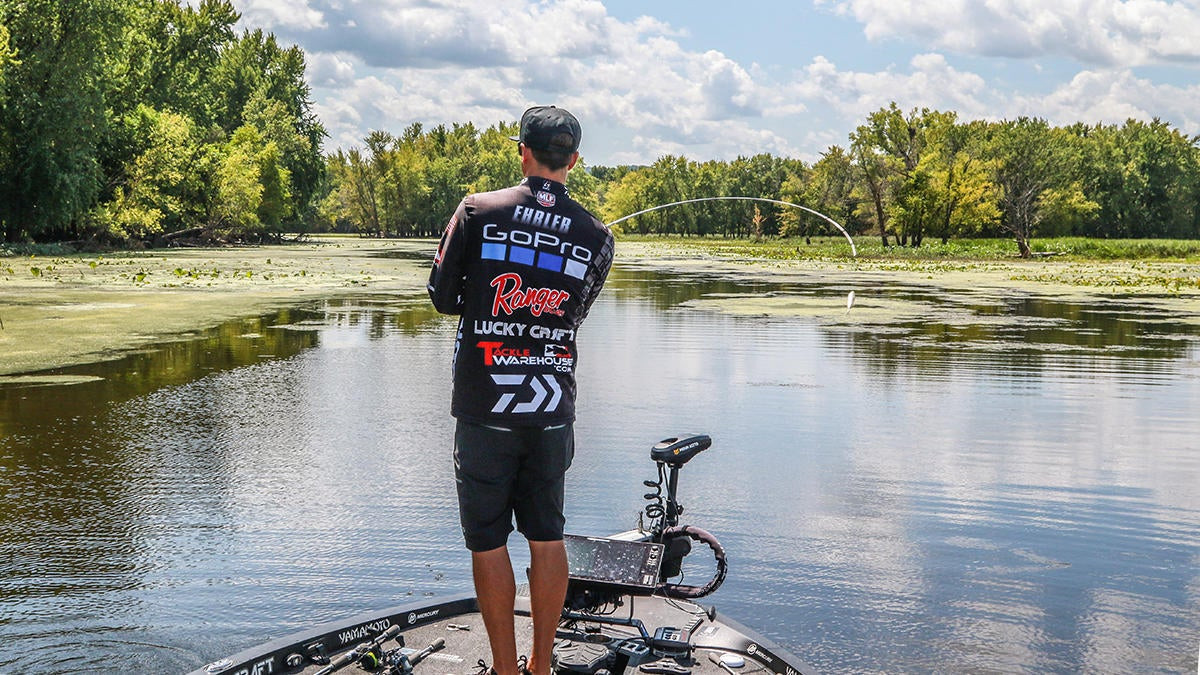Forging a decorated career as a bass pro has required Brent Ehrler to stay on top of his game. Intrinsic to his success has been his mastery of the topwater game.
The California standout favors the surface approach pretty much from the time bass leave their beds until it’s time to carve pumpkins — with an emphasis on the times when fish are feeding aggressively.
“As soon as they’re done spawning, they’re trying to feed up and then you have the shad spawn and the bream bed deal which, for me, is a big topwater opportunity,” he said. “Then, in the late summer-early fall, they get into schooling action, so basically, postpawn through fall is when I’ll throw it.”
It all starts with lure selection
Ehrler’s topwater acumen starts with his bait selection – a rare, best-of-both-worlds creation that he had a hand in designing. His choice is the Lucky Craft 108 Sammy, a 5/8-ounce walking topwater lure that measures 4 1/4 inches and sports a trio of treble hooks.
“This is the first Lucky Craft walking topwater bait that sits flat in the water,” Ehrler said. “In the past, the entire Sammy series was tail-heavy; the nose is out of the water, but the tail is under the water. That does not allow you to walk the bait really slow.
“With the 108 size, you can fish it really fast, you can fish it slow and you can turn it on a dime. Say you’re throwing it around laydowns, overhanging trees – somewhere you want it stay in the strike zone longer – you can walk this bait four or five times left to right and not pull it more than 5 inches from the strike zone.”
One of Ehrler’s favorite tactics involves walking the bait to one side, pausing, twitching; then repeating to the other side. This taunting motion is tough to achieve if you have to lift the bait’s backside on every movement.
“The 108 size is the perfect in-between size, because I often run into the issue of not knowing what the fish are keying on – whether it’s an event where I get zero practice, or an event where in a limited amount of practice, I don’t have time to see what size they want,” Ehrler said. “Now, I can grab one bait that fits right in the middle. To me, if the fish are keying on smaller bait, they’re still going to bit it; if they like the bigger bait, they’re still going to bite it.”
And when a fish bites, that triple treble setup virtually ensures a solid connection. By comparison, Ehrler notes that one of his favorite walking baits – the Lucky Craft Gunfish – wears only two trebles, which leaves a vulnerable center zone where fish occasionally bite and miss the barbs.
“Your odds go up with more trebles,” Ehrler said.
The shape of your split ring matters
Ehrler insists on the oblong rings because his knot is less likely to slide between the overlapping arms where it risks breakage or a complete revolution that separates the knot from the lure on a cast.
Gear for the rear
He’s also an ardent believer in fitting the back of his bait with a Gamakatsu Feathered Treble, which enhance the bait’s allure.
“A lot of times, fish will approach from the rear, look at the bait and decide if they want to bite,” Ehrler said. “That feathered treble convinces them to bite. You may never see the ones that just look at the bait, but those feathers increase your odds. I use a feathered treble always on poppers and 90 percent of the time on walking baits.”
Ehrler maximizes the dressed treble by minimizing its profile. Clipping out about half of the feathers and a few of the Crystal Flash filaments reduces the bulk and allows the remaining elements more room.
Important tackle notes
Ehrler fishes his topwater baits on a 6-foot, 9-inch medium-light Daiwa Tatula Elite Seth Feider Small Topwater/Small Jerkbait rod paired with a Tatula 100 casting reel carrying 30-pound Sunline X-Plasma braid with a 19-pound monofilament leader. This setup, he said, provides the optimal balance of bait control and fish-fighting efficiency.
“I think if you go any stiffer than this, you pull the bait away on the hookset,” Ehrler said. “You don’t set the hook, you pull into him. What I think happens with a stiffer rod is you tear the hook out of the fish’s mouth. With braided line, there’s zero stretch, so when you pull the only thing that absorbs that pressure is the softness of the rod.
“You overpower a fish with braid, so you need a softer rod. I honestly believe I land more fish with that topwater rod because it is so soft. People will throw that 108 on a medium-heavy rod and I promise you I will land more fish than they will because I’m using a lighter rod.”
















